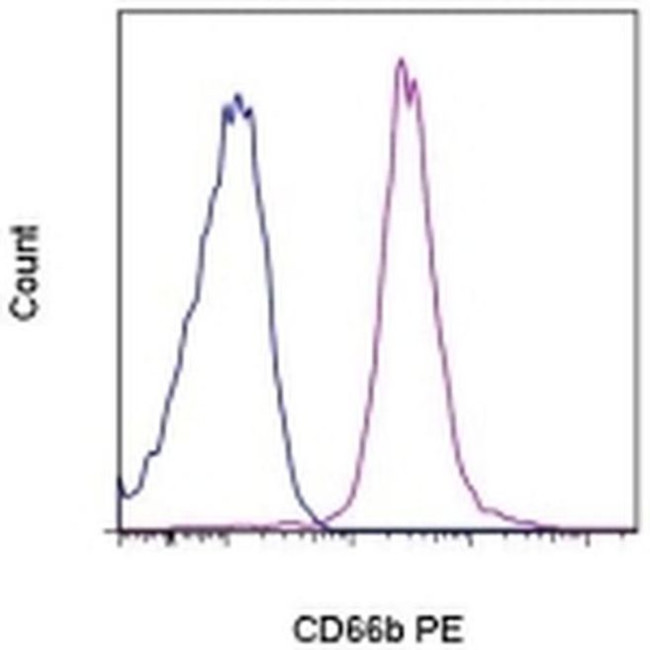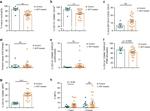Search Thermo Fisher Scientific
Invitrogen
CD66b Monoclonal Antibody (G10F5), PE, eBioscience™
Product Details
12-0666-42
Species Reactivity
Published species
Host/Isotype
Class
Type
Clone
Conjugate
Excitation/Emission Max
Form
Concentration
Purification
Storage buffer
Contains
Storage conditions
Shipping conditions
RRID
Product Specific Information
Description: This G10F5 monoclonal antibody reacts with human CD66b, one of four members of the CD66 family of granulocyte-specific activation antigens. Expressed on neutrophils and eosinophils, CD66b is upregulated following stimulation. This glycosyl-phosphatidylinositol-linked cell surface receptor plays a role in regulating neutrophil activation and adhesion to fibronectin, galectin-3, and E-selectin.
Applications Reported: This G10F5 antibody has been reported for use in flow cytometric analysis.
Applications Tested: This G10F5 antibody has been pre-titrated and tested by flow cytometric analysis of normal human peripheral blood cells. This can be used at 5 µL (0.125 µg) per test. A test is defined as the amount (µg) of antibody that will stain a cell sample in a final volume of 100 µL. Cell number should be determined empirically but can range from 10^5 to 10^8 cells/test.
Excitation: 488-561 nm; Emission: 578 nm; Laser: Blue Laser, Green Laser, Yellow-Green Laser.
Filtration: 0.2 µm post-manufacturing filtered.
Target Information
This gene encodes a member of the carcinoembryonic antigen (CEA) gene family, which belongs to the immunoglobulin superfamily. Two subgroups of the CEA family, the CEA cell adhesion molecules and the pregnancy-specific glycoproteins, are located within a 1.2 Mb cluster on the long arm of chromosome 19. Eleven pseudogenes of the CEA cell adhesion molecule subgroup are also found in the cluster. The encoded protein was originally described in bile ducts of liver as biliary glycoprotein. Subsequently, it was found to be a cell-cell adhesion molecule detected on leukocytes, epithelia, and endothelia. The encoded protein mediates cell adhesion via homophilic as well as heterophilic binding to other proteins of the subgroup. Multiple cellular activities have been attributed to the encoded protein, including roles in the differentiation and arrangement of tissue three-dimensional structure, angiogenesis, apoptosis, tumor suppression, metastasis, and the modulation of innate and adaptive immune responses. Multiple transcript variants encoding different isoforms have been reported, but the full-length nature of all variants has not been defined.
For Research Use Only. Not for use in diagnostic procedures. Not for resale without express authorization.
How to use the Panel Builder
Watch the video to learn how to use the Invitrogen Flow Cytometry Panel Builder to build your next flow cytometry panel in 5 easy steps.
Bioinformatics
Protein Aliases: Carcinoembryonic antigen CGM6; carcinoembryonic antigen gene family member 6; Carcinoembryonic antigen-related cell adhesion molecule 8; CD66b; CD67 antigen; Non-specific cross-reacting antigen NCA-95
Gene Aliases: CD66b; CD67; CEACAM8; CGM6; NCA-95
UniProt ID: (Human) P31997
Entrez Gene ID: (Human) 1088

Performance Guarantee
If an Invitrogen™ antibody doesn't perform as described on our website or datasheet,we'll replace the product at no cost to you, or provide you with a credit for a future purchase.*
Learn more
We're here to help
Get expert recommendations for common problems or connect directly with an on staff expert for technical assistance related to applications, equipment and general product use.
Contact tech support



